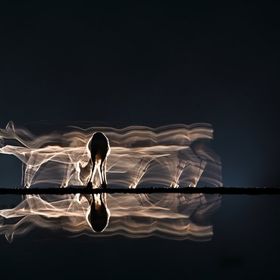Big spider tarantula Mexican flame knee - Brachypelma auratum - animal in human care.
Big spider tarantula Mexican flame knee - Brachypelma auratum - animal in human care.
Read less
Read less
Views
851
Likes
Awards
Contest Finalist in Macro Monsters Photo Contest
Peer Award
Top Choice
Absolute Masterpiece
Magnificent Capture
Genius
Superior Skill
All Star
Outstanding Creativity
Superb Composition
Categories
Same photographer See allBehind The Lens
Discover more photos See all
Behind The Lens
Location
I created this photo during private macro photo event with my good friends photographers in the Czech Republic. We took advantage of a unique opportunity to take a pictures of a several species of exotic amphibians, reptiles and insects/arachnids. This scenery has been carefully selected to resemble as much as possible a natural dry sandy habitat.Time
It was a warm summer day on 15/7/2017. Seven is my lucky number ????. At 17:15 the weather was very favorable and the sun was hiding behind a fine haze.Lighting
The sun was behind a gentle haze and we got the optimal natural diffused light. Thanks to this, there are no distinctive shadows on the spider and no highlights.Equipment
At that time I was working with my favourite very fast digital camera Nikon D5 and with my very old macro lens Micro-Nikkor 200mm f/4D IF-ED. I needed to be very low over the sand surface. I did not use the tripod, I lay on the sand and held the camera in my hand.Inspiration
At another photographic macro event in the past, I have already photographed exotic spiders in various positions, but mostly on some vegetation. Now I wanted to catch a spider looking at a frog in direct motion against me. It's best if he got to his feet and lifted the front of his body while threateningly showing his chelicerae. I was very lucky and the spider showed me exactly as I wanted.Editing
I used only the basic adjustments in the software Nikon Capture NX-D. The scene was lit almost optimally and there was no need to significantly adjust the highlights on the fine hairs, which are almost always formed. I love natural photos. Shots without big adjustments. I try to capture all my photos so I do not have to use the post-processing. I know it is very modern and trendy today, but I do not work with PS or LR or other sophisticated post-processing software. Maybe my photos could be even more attractive, but I want to show real reality.In my camera bag
The contents of my robust Tamrac bag is primarily a powerful digital camera that I can rely on in every weather. Now I'm normally using the body Nikon D5 and the backup body Nikon D850 (or Z7). I normally wear Nikkor lenses 24-70 f/2.8 and 70-200 f/2.8. These "workers" have always been with me. On the "macro" action I take the excellent old micro lens Nikkor 200 f/4 or micro lens 105 f/2,8. For animals and birds photography I need to pack "heavier weight" - I'm using the lenses Nikkor 400 f/2.8, Nikkor 300 f/2.8 and Nikkor 200 f/2.0. And now also a new zoom lens Nikkor 180-400 f/4 with built-in converter TC1.4. The last one year I test the new mirrorless system and my Nikon Z7 with my fast lenses.Feedback
When it comes to photographing the exotic animals or endangered animal species, I recommend the form of "assisted (arranged) photography". It's about photographing a species of wild animal that is in human care. The animal is tame, working well with it, and it is especially safe for humans. Most importantly, the photographer does not disturb wild animals in their natural biotope. Today there is a trend commercial group photographic expeditions to exotic countries. From the yield is funded the rescue of endangered animal species. But too frequent visits of groups of people in animal biotopes are very disturbing and stressful for endangered animals and their food chain. These expeditions can become very destructive for small animal populations and, instead of rescuing animals, can speed their extinction. We all photographers have to think, whether our money really helps those animals.














































